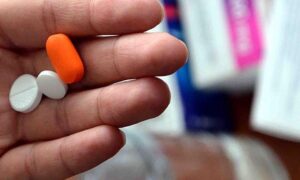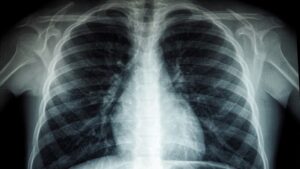[ad_1]
Pimples on the skin of the scalp are quite common. Although many think that they are manifestations of acne, in reality the causes can be many and different.
Pimples on the head are similar to those of acne. They usually develop around the hairline, but many people also feel them in between their hair, e.g. on the temples or top of the head. These pimples can be isolated or appear in clusters. Sometimes, they spread over the entire skull.
As with pimples elsewhere on the body, those on the head can be itchy and painful. They usually develop when a skin pore or hair follicle becomes blocked by dead skin cells or sebum (the skin’s natural oil).
In several cases, fungi, bacteria or even mites are involved in their appearance, which can enter the pores of the skin and cause inflammation. Culpable pathogens include Malassezia, Staphylococcus epidermidis, Propionibacterium acnes, Staphylococcus aureus, etc.
The most common cause of pimples on the head is folliculitis. It is an inflammation of the hair follicles due to the entry of bacteria into them. Folliculitis often causes skin lesions that resemble those of acne. However, they are usually accompanied by a feeling of itching and burning (burning) in the skin.
Seborrheic dermatitis is another condition that can be indirectly responsible for pimples on the head. In this case, the skin of the scalp may be red in places, while itching (itching), dryness and peeling are caused as if the sufferer has severe dandruff. Persistent and localized itching can cause pimples.
Sometimes what patients perceive as pimples are the so-called Pilar cysts or scalp cysts. These are benign formations that have the color of the skin and usually develop on the head. They are painless to the touch, grow gradually over time and may eventually become significant in size.
Pimples on the head, however, can also develop due to lifestyle. For example, the build-up of hair products on the scalp (eg hairspray, gel) can play a role, especially when a person does not bathe often. There are also people who have sensitivities to hair products and others who do not soap and/or rinse their hair well with the result that it either does not clean well or leaves shampoo residue on the skin.
Pimples can also form after intense exercise, usually if the exerciser is in the habit of not showering after each workout. Even a person sweating while wearing a head covering (such as a cap) can cause pimples, especially when the covering creates friction.
Because there are many possible causes and contributing factors for pimples on the head, a careful examination by a dermatologist is very important in order to make a correct diagnosis and recommend the appropriate treatment, experts point out.
In most cases, the first recommendation is to use a medicated shampoo or other topical treatment, which will clear the pores. Medicated shampoos may contain ingredients such as tea tree essential oil (reduces bacteria), salicylic acid (removes dead skin cells), glycolic acid (gently exfoliates, removing dead cells, bacteria and sebum), ketoconazole (is an antifungal agent) , Benzene Peroxide (Fights Propionibacterium acnes) etc. This is why the choice of the product must be made by the dermatologist, who can judge what is most suitable for each individual patient.
When pimples on the head are due to severe inflammation, are persistent, and/or cause complications such as hair loss, the doctor may prescribe additional treatments. These include topical antibiotic ointments or creams with steroids (cortisones), steroid injections, oral antibiotics, antihistamines for severe itching, phototherapy, or special medications for severe acne such as isotretinoin.
In addition to medical treatment, good skull hygiene is also very important. A general rule of thumb is to wash your hair whenever it starts to get “oily” and definitely after any strenuous activity that causes the scalp to sweat.
It is still necessary not to wear tight headgear, use gentle products to care for your hair, not to use too many products such as hairsprays and gels, and to keep a food diary in case certain foods trigger flare-ups of your dermatitis.
Pimples on the head can be treated. However, as it applies to the other parts of the body, we should not break them on the scalp, so that the bacteria do not spread and create more. Proper scalp care can in many cases prevent their recurrence.
[ad_2]
Source link






